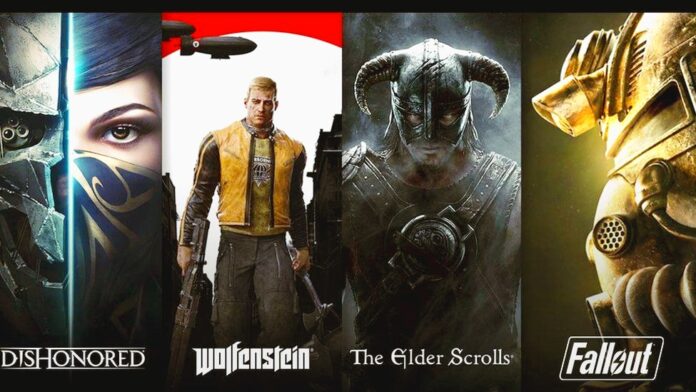36 years before Starfield, Bethesda could only dream of Open Worlds – we take you on a turbulent journey through time!
Good thing Christopher Weaver didn”t found his Bethesda Softworks in 1986 in Llanfairpwllgwyngyllgogerychwyrndrobwllllantysiliogogogoch, Wales – then the company would be called Llanfairpwllgwyngyllgogerychwyrndrobwllllantysiliogogogoch Softworks. For the name Bethesda Softworks simply derives from the company”s first headquarters, in the town of Bethesda in the US state of Maryland.
Table of Contents
Football on the gridiron
Christopher Weaver has a master”s degree in his pocket from the famous MIT, i.e. the Massachusetts Institute of Technology, where he did research on the precursor of virtual reality, among other things. But his passion is video games. Luckily!
Weaver”s university background already shows through in the young company”s first game: On the surface, the football game Gridiron! consists of yellow and black circles raging across a green field with white stripes. But behind it all is the first real-time physics engine in the history of games. Gridiron! appears on the Amiga and its rival Atari ST.

Electronic Arts became aware of the unspectacular but realistically simulated football game and Bethesda was commissioned to develop a successor, which EA wanted to release as John Madden Football. But when Bethesda said it was finished, the game did not appear in the shops. Instead, EA publishes a completely different John Madden Football in 1988, and Bethesda suspects that the competitor is only after the physics engine of “Gridiron! 2″.
Weavers files a lawsuit and demands 7.3 million dollars from EA. To this day it is unknown what the outcome of the lawsuit was. Bethesda says goodbye to football and takes to the ice: Wayne Gretzky Hockey is the studio”s first PC game in 1988 and receives two sequels before EA also makes its mark here with NHL.
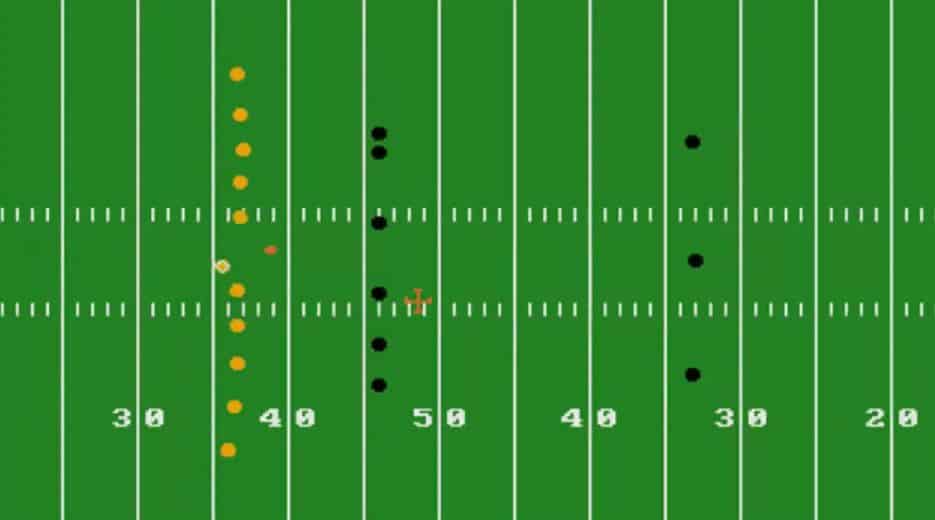
I”ll be back! And again. And again.
In 1990, Bethesda leaves Bethesda behind and moves about 10 miles away to Rockville, where the publisher”s headquarters remain to this day. Over the next few years, Bethesda earns its bagels with an army of Terminator games, accompanied by more licensed titles for the NES (Nintendo Entertainment System), including Kevin Alone at Home and the puzzle game Where”s Waldo?

The Terminator titles are rather mediocre in terms of gameplay, but technically impressive. The Terminator: Rampage, for example, released in 1993 a month before Doom, is one of the first first-person shooters to use the entire screen and is fully textured.
While most gamers today remember Doom and Quake fondly, Bethesda”s part in the shooter arms race is all but forgotten. Yet the studio was definitely on a par technically. Already in 1995, a year before Quake, Terminator: Future Shock mastered real 3D with animated models. The id games ran more quickly and made history, but Bethesda belongs to the technical spearhead – from which the Elder Scrolls series also benefits.
Six. Million. Square. kilometres.
For Bethesda packed the 3D experience of its Terminator titles into a role-playing game that has not only shaped the company”s history to this day. The Elder Scrolls: Arena sets completely new standards in 1994. With around six million square kilometres of game world, it is still by far the largest game in the series in terms of area, bought through procedural generation.
Apart from bugs and poor balancing, this is also Arena”s biggest point of criticism – the overworld, in particular, is logically too varied and interchangeable. Nevertheless, the giant chunk enjoys cult status today. A certain Todd Howard started at Bethesda as a tester of the CD-Rom version – he would quickly become the mastermind of the series.
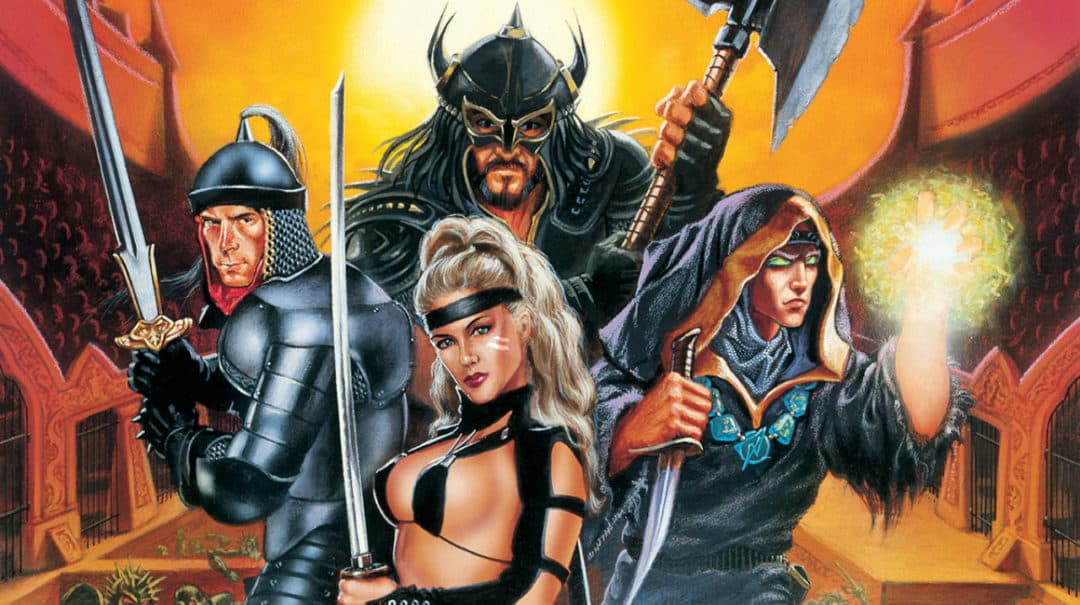
1996 the second Elder Scrolls follows. Daggerfall uses the proven mouse control from the in-house Terminator games and is discreetly smaller. Whereby “smaller” is relative, because there are still 15,000 villages and 75,000 NPCs, and it takes 69 hours to traipse through the game world (who actually tries this out?).
Daggerfall promptly earns much better ratings and sales figures. To keep up the momentum, Bethesda follows up with the two series spin-offs Redguard and Battlespire, but both flop. With dramatic consequences for the publisher, which is now on the brink of insolvency.
Saviour Zenimax
With a clever move, Bethesda founder Christopher Weaver pulls himself out of the swamp by his own hair, so to speak: together with lawyer and businessman Robert Altman, he founds the company Zenimax Media in 1999 and takes Bethesda directly under his roof. The plan: “Away from the corner shop, towards a global business structure”, as PR boss Pete Hines puts it.
Financially strong entrepreneurs join in, including blockbuster king Jerry Bruckheimer, Harry Sloan, boss of the Metro Goldwyn Mayer film empire, and Robert Trump, the younger brother of future US President Donald. In 2001, Bethesda Softworks changed from a developer-publisher mix to a pure publisher. From now on, in-house developments are carried out by Bethesda Game Studios. Their first job: Elder Scrolls 3.
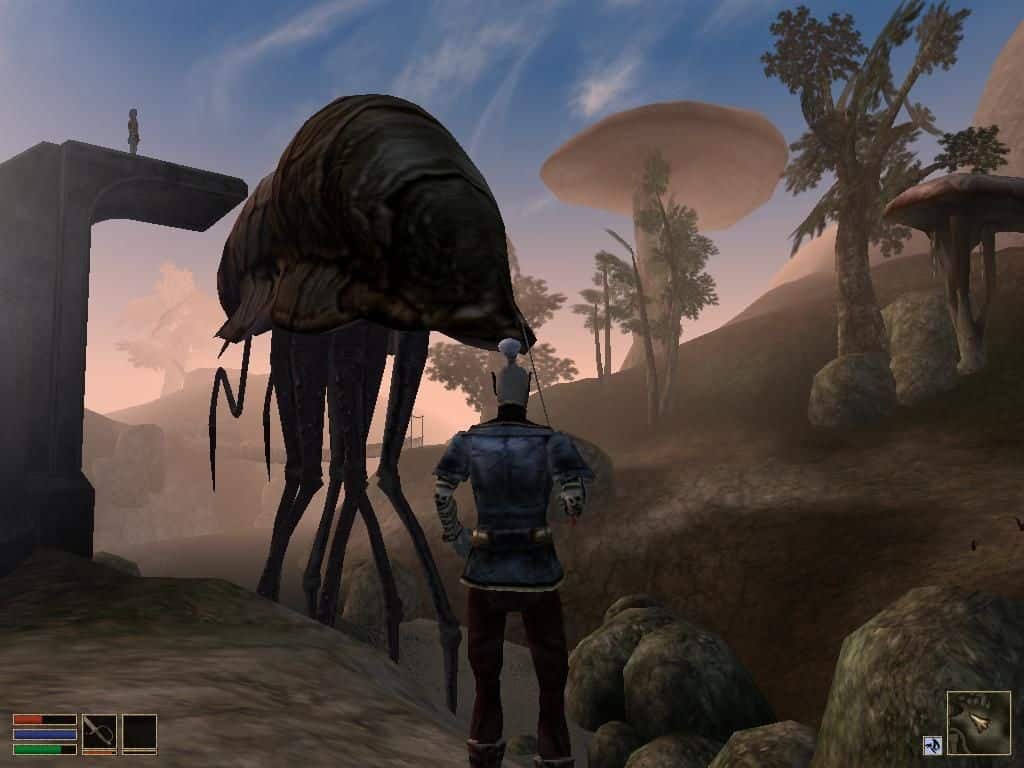
2002 Christopher Weaver is kicked out of Zenimax for allegedly continuing to teach at MIT at company expense. A legal tussle ensues: Weaver sues Zenimax for trying to force him out of the business on a cheap pretext and is awarded $1.2 million in severance pay.
Zenimax appeals and accuses Weaver of breaking into company offices to go through emails of leading managers like co-founder Robert Altman. Both parties eventually settle out of court.
Getting out of the swamp with Morrowind
2002 things are looking up again financially: ex-CD tester Todd Howard is now project manager of Morrowind and is doing a damn good job. On the one hand, technically, because Elder Scrolls 3 is based on a Direct 3D engine with an impressive level of detail and great effects like raindrops that splash realistically into bodies of water.
The game world, the island of Vvardenfell, is much more compact than that of the two predecessors. But it is not assembled by a random generator, but by hand, just like its inhabitants.
In June 2004, Bethesda signs a deal on which the publisher”s second strong pillar is henceforth based: Struggling competitor Interplay sells the rights to Fallout 3, Fallout 4 and Fallout 5. Fallout 3 is already in development at Black Isle Studios by then, but Bethesda pulls the plug on the “Van Buren” prototype and has Todd Howard build a 3D Fallout instead, which will be ready in 2008.
But first the fourth Elder Scrolls is launched: Oblivion scores again in 2006 with brilliant graphics. The big innovation, however, is the self-developed Radiant AI. It makes NPCs act more credibly and will be used in other Bethesda games. Oblivion is a huge success, selling over 3.5 million copies, but it also causes trouble because it leads to some questionable DLCs, including the infamous horse armour for two euros fuffzig.
In the middle instead of just from above
In August 2007, the boom time of MMOs, Bethesda hires Matt Firor, founder of Dark Age of Camelot makers Mythic. He is to build up the MMO subsidiary studio Zenimax Online – more on this later. At the same time, Bethesda is expanding worldwide: for its last titles, the company still had to rely on publishing partners like Ubisoft outside the USA. But the success of Oblivion puts an end to this, and in 2008 Bethesda opens its publishing branch in London, followed by other branches, including one in Frankfurt.
In the same year, after four years of development, Fallout 3 is released. At first it irritates many Fallout fans with its first-person and shoulder perspective and the significantly higher action content. But irritation quickly turns into enthusiasm, because Fallout 3 is simply great and earns dream ratings, followed by well over twelve million games sold.
Let”s buy id!
In 2009, Bethesda snatches up id Software – and with it the fat brands Doom and Quake, with the coveted idTech engine by programming genius John Carmack as the icing on the cake. The first game under the Bethesda flag is the end-time shooter Rage, which in 2011 doesn”t come close to the old id glory days, but looks nice and is definitely fun.
In 2010, Fallout 3 gets a quasi-sequel from Obsidian Entertainment, whose team consists of Black Isle veterans – you know, Van Buren and all. Fallout: New Vegas uses the same technology but goes one better in terms of gameplay, the many side quests alone are brilliantly narrated.
Heaven”s edge on high
2011 there”s trouble between Bethesda and developer Human Head, who is supposed to be making Prey 2. At the end of the year, work is stopped, Bethesda accuses the developer of lacking quality, Human Head accuses the publisher of impossible milestone dates and refused payments. The rights go back to Bethesda.
Nevertheless, the year ends on a high note for Bethesda: Skyrim is released in November, and the fifth Elder Scrolls really makes a splash; to date it is by far the most successful part of the series, with well over 30 million units sold. Todd Howard is also in charge here.
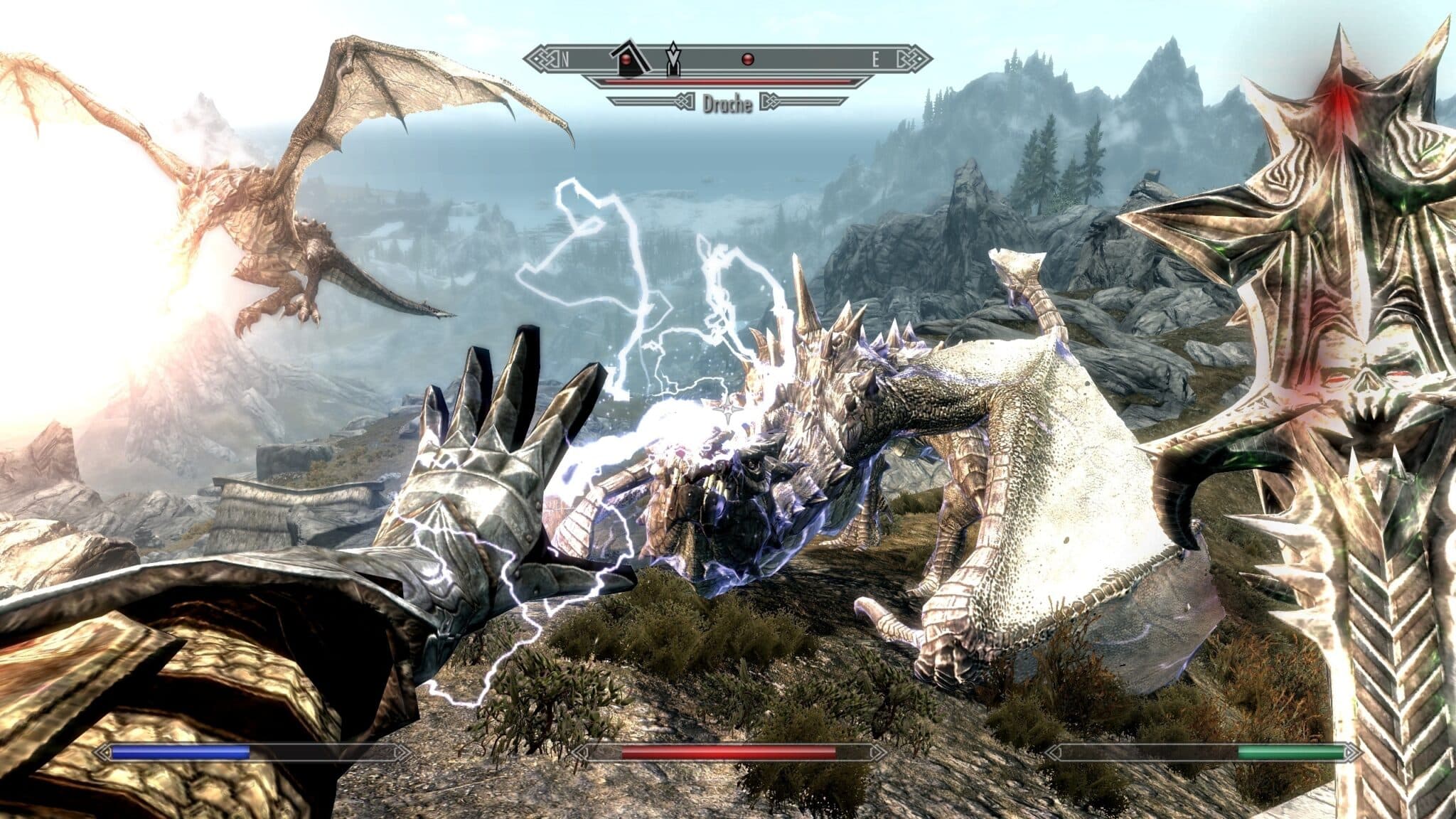
2012 Arkane Studios, bought out by Bethesda two years earlier, deliver the immersive sim Dishonored. The Paris-based studio made a name for itself with the strong but low-selling Dark Messiah of Might & Magic, their Dishonored also whistles at the mass market and gets a sequel in 2016.
2014: Blow by blow
Two years later, the MMO studio Zenimax Online, founded in 2007, hits the ground running: In 2014, the MMORPG The Elder Scrolls Online is launched and immediately inspires with a very free character system, the three factions and a lot of Tamriel atmosphere. Since then, there have been umpteen expansions, and funnily enough, the online epic can also be played well solo.
In the same year, the shooter Wolfenstein: The New Order was released. It is roughly based on Id”s classic, but the brutally brilliant shooter orgy comes from the Swedish Team Machine Games, a newly founded Zenimax subsidiary. The new Wolfenstein is so well received that the team delivered a sequel in 2017 with The New Colossus – in which we meet the aged Adolf Hitler in a giant space station.

The survival horror game The Evil Within from bought-out studio Tango Gameworks completes the 2014 trifecta, expertly playing with permanently scarce ammunition and permanently threatening zombie mutants. No wonder, after all, the studio head is Shinji Mikami, the creator of Resident Evil. In 2017, the studio delivers an even better sequel.
Radiated build-up game and a revived classic
2015 Bethesda brings a shine to end-times fans with Fallout 4, including extensive settlement building as well as cool companions like sheepdog Dogmeat and robo-butler Codsworth to help us search for our missing child.
2016 id Software finally knocks one out of the park: with their Doom remake, the Texans do an excellent job of reviving the classic, direct shooter mechanics and reworking them in all the right places. The new Doom plays accordingly fast and reflexively – who needs a story or any reasons to be allowed to perforate, saw up and shred hordes of demons? Exactly!
Cool loot, uncool precipitation
And then it comes in 2017 after all: Prey! Not by Human Head, as originally planned, but by Arkane Studios. They send us into an oppressive space station with clever puzzles, decommissioned machines and nasty creatures. Experimenting with gun turrets and physics traps is therefore a lot of fun.
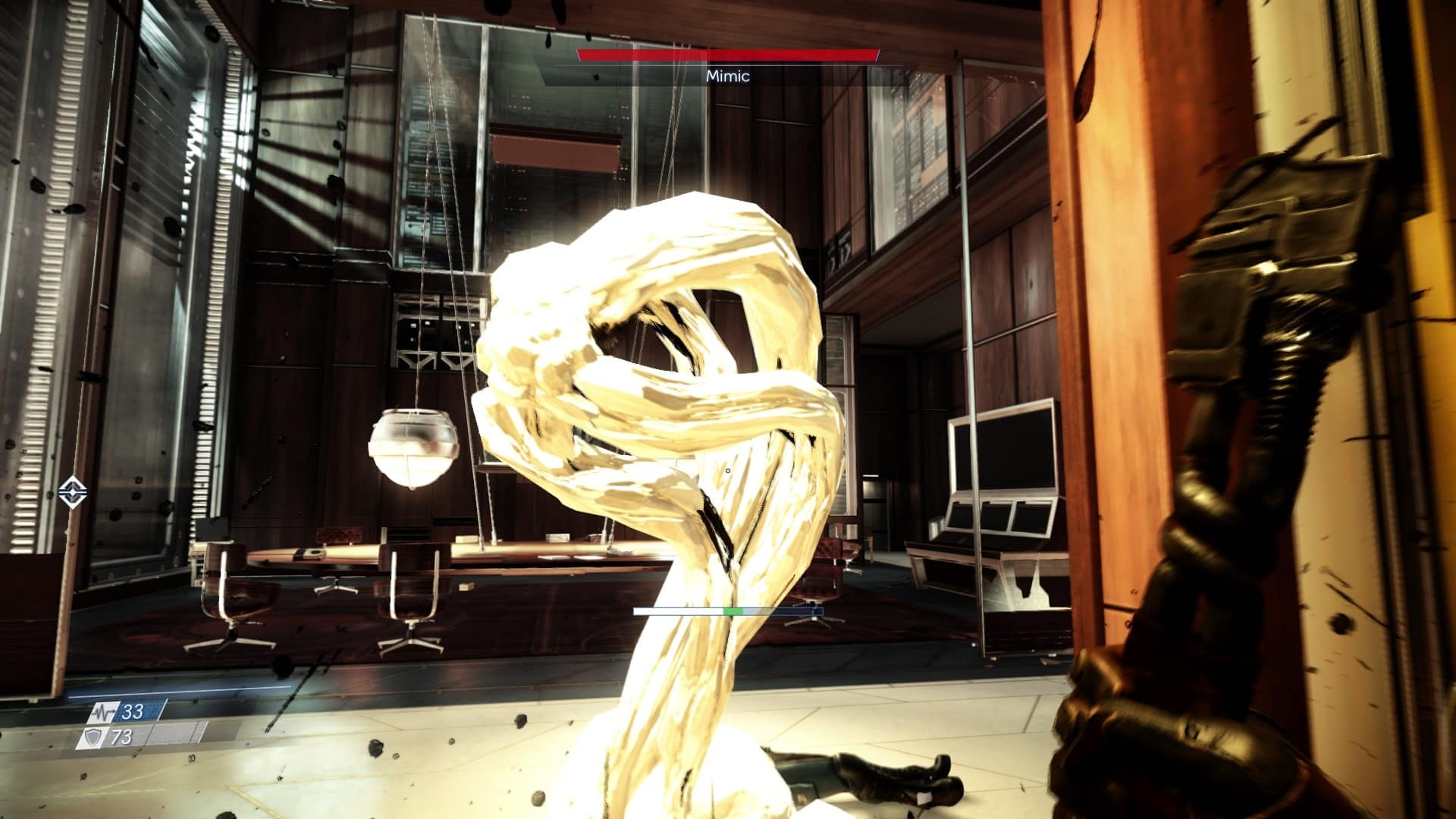
Which is not really something you can say about Fallout 76. Because Zenimax”s second MMO smacks Fallout fans upside the head for its 2018 release. Too many bugs and glitches, almost no NPCs, hardly any cool quests – that makes the online Fallout a huge disappointment. On top of that, the Collector”s Edition doesn”t come with the promised linen bag, but rather with a dull nylon substitute. At least the developers have improved the game a lot since then, but it”s still nowhere near its predecessors.
New home, new neighbours
Was there anything else? Oh yes: as of 21 September 2020, Zenimax Media and all its studios are part of Microsoft”s Xbox Game Studios, joining Obsidian, inXile, Mojang, Double Fine Productions and another eleven developers. Since then, Bethesda has been quiet. Apart from regular expansions for ESO, the first-person shooter Deathloop (2021, Arkane Studios) and the playfully half-baked Ghostwire: Tokyo (Tango Gameworks, 2022), the role-playing world is waiting for the next drumbeat: Starfield, Elder Scrolls 6 and Fallout 5!

